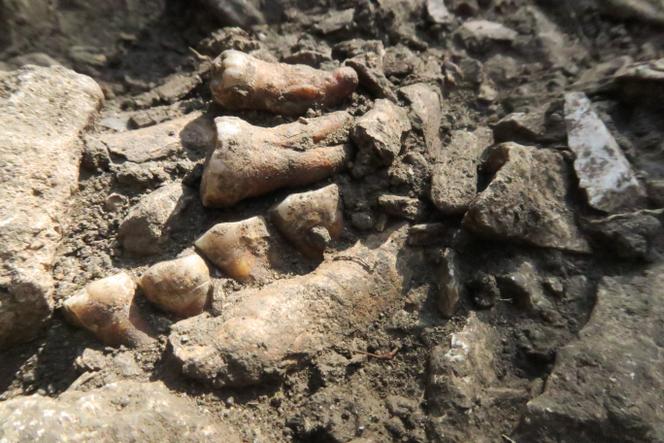


Allow us to take a trip down memory lane, to September 2018. It was in Malataverne, a village in southern France, in the Mandrin cave. There, every summer for several years, a team led by archaeologist Ludovic Slimak, a researcher at the National Center for Scientific Research (CNRS), had been on the hunt for France's last Neanderthals. Then, as Le Monde was reporting on the team, an apparition emerged at the entrance to the cave: A crushed mandible full of teeth, still trapped in the grey soil. A few phalanges next to it and, a little further on, more teeth. The skull was missing, but it was, undoubtedly, the finest Neanderthal specimen discovered in France since the late 1970s. A wonderful scoop.
However, the field of science and its popularization are such that one cannot mention a discovery until an in-depth study of it has been published in a respectable journal. This is not only to avoid compromising the researcher's work and their trust, but also to ensure that the presumed discovery doesn't end up falling flat. So, Le Monde had to promise not to reveal anything, to hold back on the scoop and exercise patience. Six years later, almost to the day, the study finally was published in Cell Genomics, on Wednesday, September 11.
The individual was given the name "Thorin," after the character in the novel The Hobbit. "It's a tribute to Tolkien, who described intelligent humanoids belonging to different species," explained Slimak, the study's first author. "Tolkien's Thorin is one of the last dwarf kings under the mountain, one of the last of his lineage, and our Thorin is one of the last Neanderthals."
There are two main reasons why the study took so long before being published. Firstly, there was the slow speed of extraction of Thorin's remains, which had actually started to be unearthed as early as 2015! "I had decided to extend the dig to the exterior of the cave," said Slimak. "It was while cleaning the area that we saw it." With the first brushstroke, five connected teeth appeared. "Nobody pulls a fragment out of jawbone," said the researcher. "There had to be a body. But on the ground level, everything is in a fragile state. How do you extract this thing, which is made up of thousands of little pieces, all the while preserving its precise position?" He answered: "We stopped everything, sat down and thought about it. We had to develop a grain-by-grain extraction protocol. And when I say that, it's not an image, it's grain by grain, with tweezers."
You have 64.86% of this article left to read. The rest is for subscribers only.
